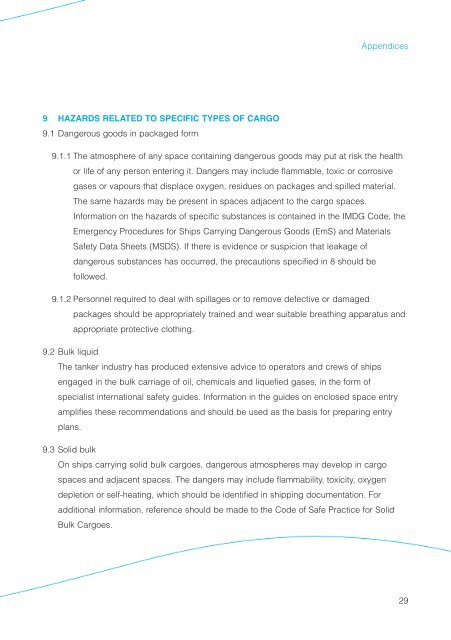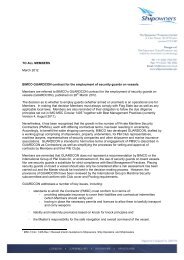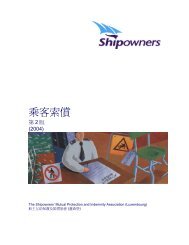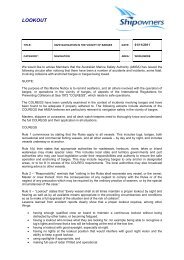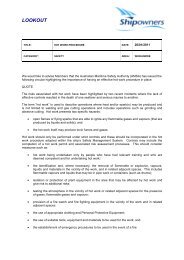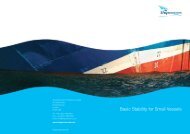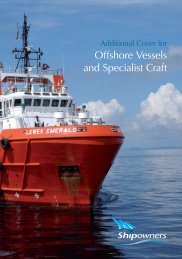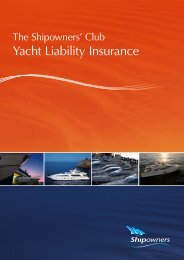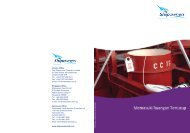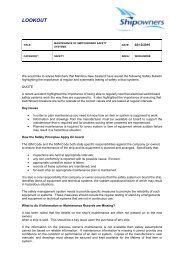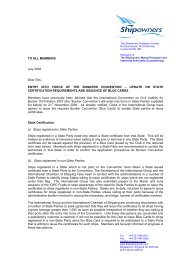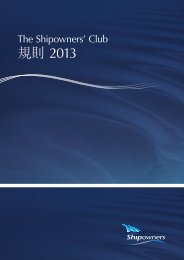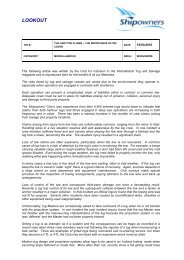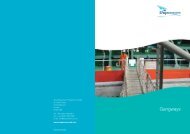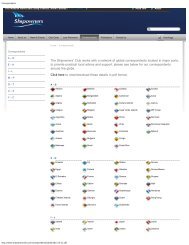Enclosed Space Entry - Shipowners
Enclosed Space Entry - Shipowners
Enclosed Space Entry - Shipowners
Create successful ePaper yourself
Turn your PDF publications into a flip-book with our unique Google optimized e-Paper software.
9 HAZARDS RELATED TO SPECIFIC TYPES OF CARGO<br />
9.1 Dangerous goods in packaged form<br />
Appendices<br />
9.1.1 The atmosphere of any space containing dangerous goods may put at risk the health<br />
or life of any person entering it. Dangers may include flammable, toxic or corrosive<br />
gases or vapours that displace oxygen, residues on packages and spilled material.<br />
The same hazards may be present in spaces adjacent to the cargo spaces.<br />
Information on the hazards of specific substances is contained in the IMDG Code, the<br />
Emergency Procedures for Ships Carrying Dangerous Goods (EmS) and Materials<br />
Safety Data Sheets (MSDS). If there is evidence or suspicion that leakage of<br />
dangerous substances has occurred, the precautions specified in 8 should be<br />
followed.<br />
9.1.2 Personnel required to deal with spillages or to remove defective or damaged<br />
packages should be appropriately trained and wear suitable breathing apparatus and<br />
appropriate protective clothing.<br />
9.2 Bulk liquid<br />
The tanker industry has produced extensive advice to operators and crews of ships<br />
engaged in the bulk carriage of oil, chemicals and liquefied gases, in the form of<br />
specialist international safety guides. Information in the guides on enclosed space entry<br />
amplifies these recommendations and should be used as the basis for preparing entry<br />
plans.<br />
9.3 Solid bulk<br />
On ships carrying solid bulk cargoes, dangerous atmospheres may develop in cargo<br />
spaces and adjacent spaces. The dangers may include flammability, toxicity, oxygen<br />
depletion or self-heating, which should be identified in shipping documentation. For<br />
additional information, reference should be made to the Code of Safe Practice for Solid<br />
Bulk Cargoes.<br />
29


